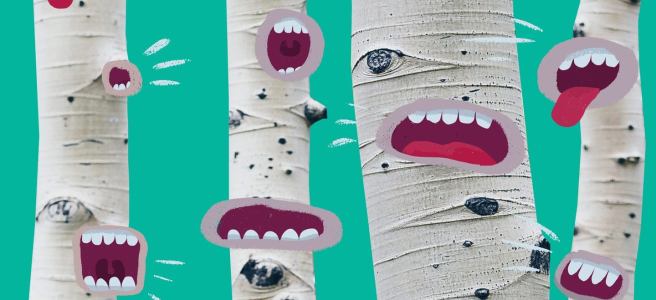Trees may not get around very much, but they do know a lot about what matters to them. Their very survival depends on being able to extract information from their environments and make appropriate responses. In other words, they make decisions. Science fiction novelist and tree scholar Sue Burke writes about trees and decisions in this December 2019 report for Slate.
Read it here.
EXPLORE, REFLECT, SPEAK UP
1. According to Burke, trees are capable of “making decisions.” What does she mean by that? What are the decisions that trees make? Do a tree’s decisions affect you in any way? Why or why not? Explain your response.
2. Burke’s report mainly draws on the work of four writers and scholars in the field, and she introduces them with a bit—a very tiny bit—of information about each one and their work. Is this information enough to establish the credibility of each source? Why or why not? What other information about Burke’s sources might you have liked to know? How would that information strengthen Burke’s report?
3. LET’S TALK. Burke quotes one of her sources as saying, “Trees don’t live in climate. They live in weather.” What does that mean, exactly? Draft a short reply to that question and discuss your responses among several classmates. Do you all have roughly the same ideas? (It’s fine if you don’t.) How does the statement about climate and weather relate to Burke’s closing sentence—that we humans can foresee the future, but trees can’t? Is she suggesting a particular course of action, and if so, what? Discuss these questions with your classmates. What new ideas emerge from your conversation?
4. LET’S WRITE. What plants or trees do you see from a window or pass by in your daily routine? Whether it’s a scraggly mullein pushing up from a sidewalk crack, a dusty cactus by the side of the road, or a lovingly pruned shrub in a neighbor’s yard, there is surely some living plant whose decisions and struggles you’ve never considered. Identify one such plant and do some research about it. (Just finding its name may be quite a project, but be persistent.) Where does it usually grow? How long does it usually live? How does it propagate? Is it indigenous to your area? What environmental challenges does it face? Then, write a report about what you learn, addressing some or all of these questions plus any other questions that you find relevant. Document your sources using the style your instructor designates.

